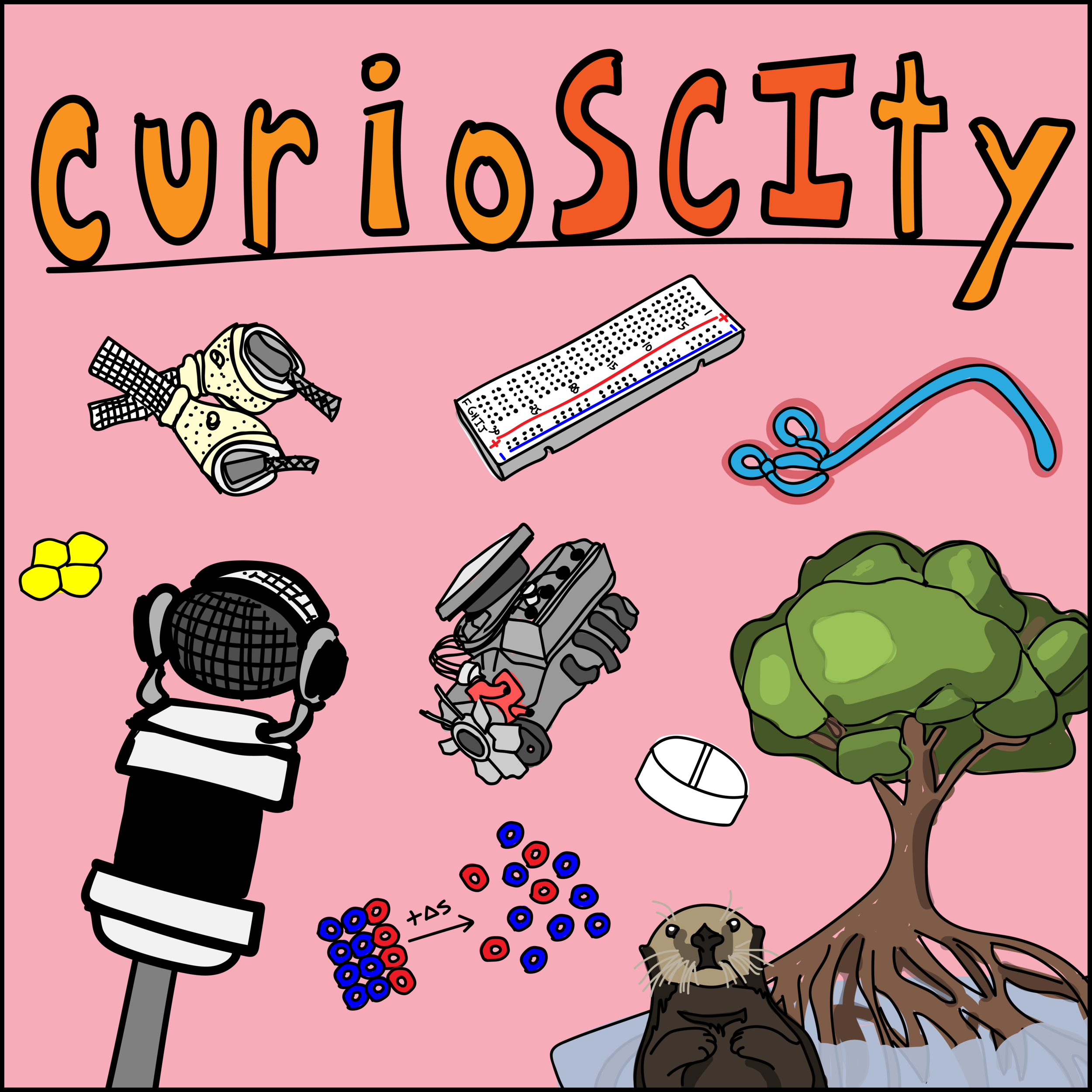43 - Scaling Up Chemical Reactions (w/ Steve Sujanksy!)
43. Scaling Up Chemical Reactions
Creating molecules that are relevant for life is a challenge that humans are only just dipping their feet into. There is a demand for creating molecules related to medicine, agriculture, or materials. How does one do chemical synthesis? What are limitations? What are some examples of scaled chemical reactions? Let’s learn to be scientifically conversational.
General Learning Concepts
1) What is a chemical reaction?
a. What is a physical change? What is a chemical change? There can be changes in materials that reflect physical changes (any change that does not impact the chemical makeup of materials); eg, texture, color, shape, or changes of state. If there is a chemical change, or chemical reaction, there is breaking or forming (or rearrangement) of chemical bonds.
b. Chemical equilibria: Chemical reactions may be envisioned in terms of reactants and products; but there is a reason that scientists use arrows to indicate reaction progress.
i. The Players: Reactants (chemicals or substances that start a chemical reaction), products (chemicals or substances that are produced by the reaction). There is also an arrow that shows the direction in which the reaction occurs instead of an equal’s sign.
ii. Chemical bonds: The Law of conservation of mass says that "Atoms are neither created, nor destroyed, during any chemical reaction." Thus, the same collection of atoms is present after a reaction as before the reaction. The changes that occur during a reaction just involve the rearrangement of atoms. Chemical reactions can do many things, including break chemicals apart and put them together. Some reactions have very tight chemical bonds called covalent bonds that require a terrific amount of energy to break or form, while some are formed from weaker interactions that require less energy.
iii. Energy: Contained within chemical bonds is energy; breaking apart chemical bonds requires energy while forming them often releases energy. In short, chemical bonds contain energy.
c. Potential energy diagram: The lower the potential energy of the system, the more stable it is: for example, if you wanted to play Jenga, would you rather do it with a shaking hand or a steady one? Similarly, chemical reactions can be more stable one they happened. [Describe reaction coordinate diagram].
i. Catalyst: A chemical or substance that speeds up chemical reactions. Acts by lowering the activation energy required for a chemical reaction. Enzymes, biological catalysts, do this same thing in nature.
2) What are some issues that limit the scale of chemical reactions?
a. Yield and Purity: A synthetic chemist hopes to make the most product out of the amount of starting material used. That individual would also hope to retain the smallest number of contaminants from other added reagents through the synthesis. This can be challenging, depending on the number of steps that are required to make a final product.
b. Order of reactions: Sometimes, some chemical modifications cause a greater impact to yield at certain points of the synthesis. The time to do these specific reactions needs to be well thought out, and experimentally tested (if possible).
c. Starting material: Starting from a cheaper, more available starting material is often a great way to increase yield by the end of the chemical reaction. In organic chemistry, for example, one might want to put as many carbon atoms into the reaction as possible to limit reactions needed to further grow the molecule.
d. Conditions: It may not be possible to drastically change the temperature, pressure, or environment of a reaction enough. Synthetic chemistry tends to be very good at this, altering environments much more drastically than would be allowable for biology, but there are still limits. Sometimes, chemical equilibrium might not be pushed forward as much as would be desired.
3) Fun Tidbits
a. Reactions at low temperatures: In chemistry, stereoselectivity is of utmost importance. Sometimes, controlling the temperature allows for greater precision of generating proper stereoisomers. Some reactions can be run at -80 centigrade for this very reason.
b. Organic synthesis can win awards: For example, Robert Burns Woodward won the Nobel Prize in Chemistry 1965 "for his outstanding achievements in the art of organic synthesis." This included the synthesis of: quinine, cholesterol, cortisone, strychnine, lysergic acid, reserpine, chlorophyll, cephalosporin, and colchicine. [2]
i. Woodward’s intellect was often on display at his famous Thursday-night seminars, which would start at 8 PM and last into the wee hours of Friday morning. “Here many brilliant ideas would emerge, apparently spontaneous and unpremeditated,” wrote Todd in his biographical memoir of Woodward, “and some at least of his audience got the impression that all that was necessary to produce brilliant ideas was a bottle of whisky and several packs of cigarettes.”
4) Solicited Questions
a. What is chemical synthesis? Beyond the Molecular Frontier, by the National Research Council (US) Committee on Challenges for the Chemical Sciences in the 21st Century: “The long-term goal of the basic science in synthesis is to develop the ability to create all the substances and organized chemical systems and transformations that are possible under the limits of natural laws, not just those that occur in Nature.”


